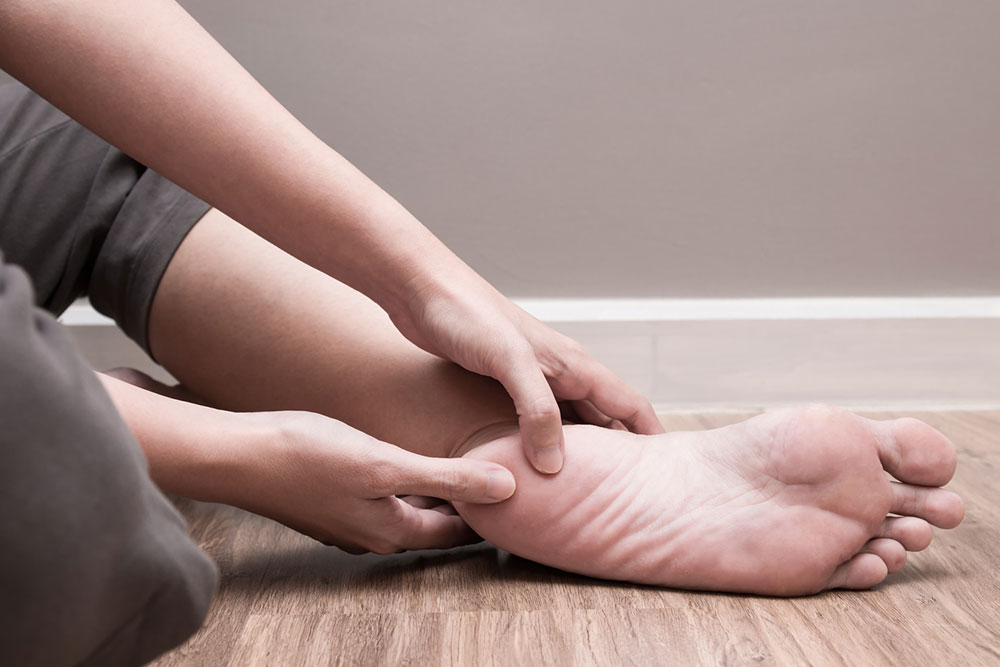Comprehensive Guide to Foot Discomfort: Causes, Symptoms, and Treatment Options
This comprehensive guide explores various causes of foot discomfort, including plantar fasciitis, nerve syndromes, arthritis, and skin conditions. It provides insights into symptoms, underlying factors, and modern treatment options to help individuals effectively address foot pain and improve mobility. Whether mild or severe, understanding these conditions is crucial for timely care and relief, ensuring better foot health and quality of life.

Foot discomfort is a common ailment that affects people across a wide age range, from adolescents to the elderly. Given the complexity and variety of structures within the foot, pinpointing the exact cause of pain can be challenging without proper medical evaluation. The foot consists of bones, muscles, tendons, ligaments, nerves, and blood vessels, all working together to provide support, balance, and mobility. When any part of this intricate system is compromised, discomfort or pain may result, impacting daily activities and quality of life. Understanding the different types of foot discomfort, their underlying causes, and available treatment options is essential for effective management and relief.
One of the most common reasons individuals seek medical attention for foot pain is Plantar Fasciitis. This condition involves inflammation of the plantar fascia, a thick band of tissue that stretches from the heel to the toes, supporting the arch of the foot. The typical symptoms include heel pain that is especially prominent during the first steps in the morning or after prolonged periods of rest. Although the pain often decreases with activity during the day, it can reappear after extended standing or walking. Chronic plantar fasciitis may require a combination of rest, physical therapy, stretching exercises, and in some cases, medical interventions like corticosteroid injections or orthotic devices to alleviate symptoms.
Another prevalent condition affecting the foot is Tarsal Tunnel Syndrome, a type of nerve compression syndrome. This disorder occurs when the posterior tibial nerve or one of its branches becomes compressed or irritated within the tarsal tunnel, a narrow space on the inside of the ankle. Patients often report radiating, shooting pain, burning sensations, numbness, or tingling that can extend into the heel and the sole of the foot. Such symptoms may worsen with activity or prolonged standing and can significantly impair walking and balance. Proper diagnosis through nerve conduction studies and imaging guides treatment, which may include rest, anti-inflammatory medications, physiotherapy, or surgical decompression in severe cases.
Metatarsalgia is characterized by pain and inflammation in the ball of the foot, typically presenting as a sharp, aching sensation. This condition is often aggravated by barefoot walking, high-impact activities, or wearing tight and ill-fitting footwear. Underlying causes include biomechanical abnormalities, altered gait patterns, decreased padding under the metatarsal heads, and overuse injuries. Rest, ice application, and choosing proper footwear with adequate cushioning can manage mild cases. In persistent cases, custom orthotics or physical therapy may be necessary to correct underlying biomechanical issues and provide long-term relief.
Morton’s Neuroma is a nerve disorder that involves thickening of tissue around one of the digital nerves leading to the toes. Patients typically experience burning, shooting pain, or numbness between the toes, especially near the ball of the foot. This condition is often associated with tight shoes, high heels, or overpronation injuries. Symptoms may worsen when wearing narrow or high-heeled footwear, leading to considerable discomfort. Conservative treatments include shoe modifications, orthotic devices, corticosteroid injections, and physiotherapy. In more severe cases, surgical removal of the neuroma may be performed to relieve symptoms.
Joint-related pain in the foot is frequently due to arthritis, which involves the degeneration of joint cartilage leading to inflammation, swelling, stiffness, and pain. Arthritis can affect various joints within the foot, including the ankle, and is commonly caused by degenerative wear-and-tear, autoimmune processes such as rheumatoid arthritis, or trauma. Management strategies include anti-inflammatory medications, physical therapy, weight management, and if necessary, surgical interventions such as joint replacement or fusion to restore function and reduce pain.
Corns and calluses are benign skin conditions that develop as a response to repeated pressure or friction. Thickened patches of skin form over high-pressure areas, with corns often appearing as round, raised, and painful lesions on toes, while calluses tend to be broader and flatter on the sole of the foot. They can cause discomfort, especially if pressure persists, and may lead to further skin breakdown if untreated. Proper footwear, regular foot care, and removal of thickened skin by a healthcare professional are key to preventing and managing these conditions.
Understanding the diverse causes of foot discomfort allows individuals to seek accurate diagnosis and effective treatment. Whether the pain originates from inflammation, nerve issues, structural abnormalities, or skin conditions, proper management can significantly enhance mobility, reduce pain, and improve overall quality of life. If you experience persistent or severe foot pain, consulting a healthcare professional or podiatrist is essential to determine the underlying cause and start an appropriate treatment plan. With advancements in medical technology and a better understanding of foot health, most conditions can be effectively treated or managed, helping individuals get back to their daily routines comfortably and safely.





